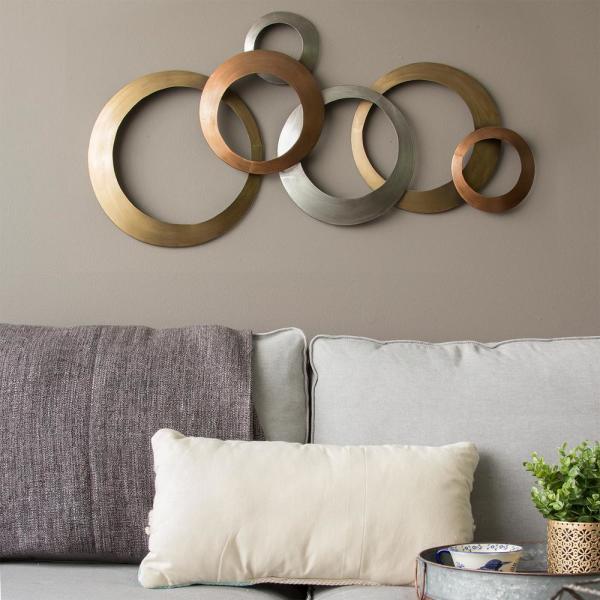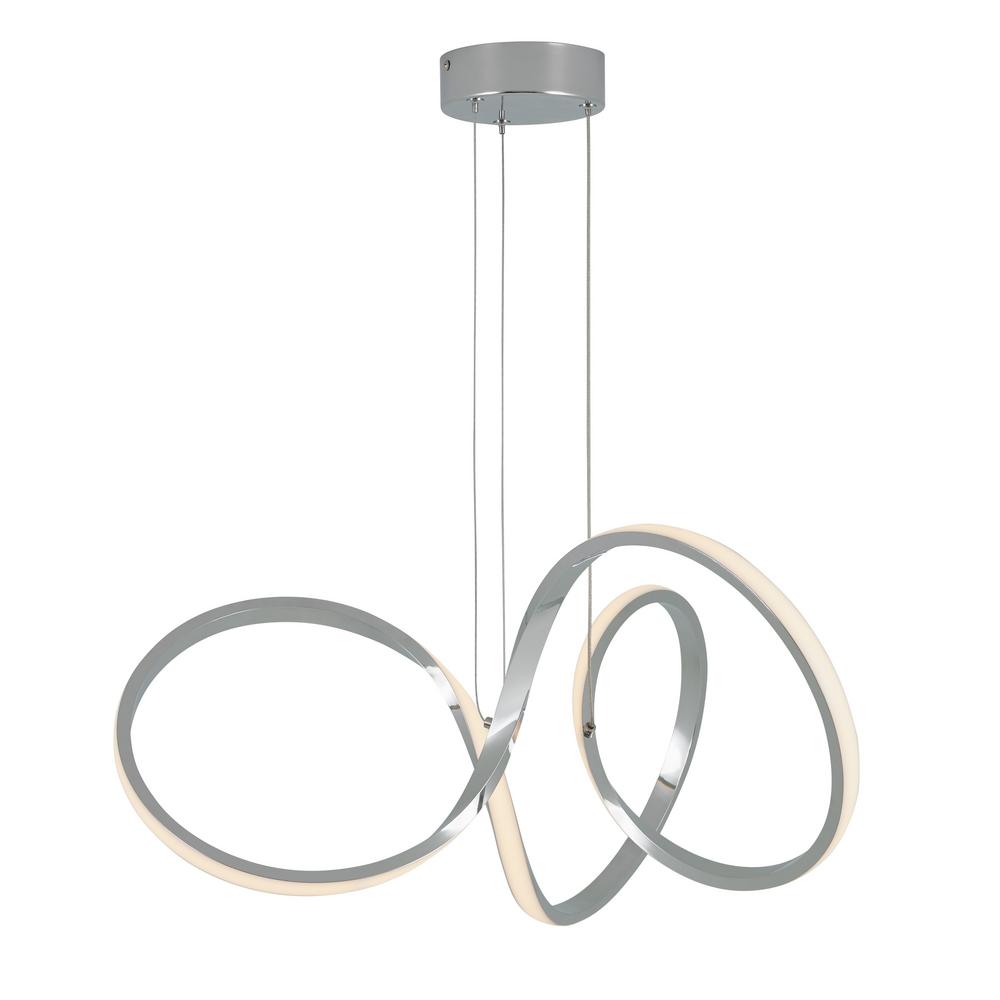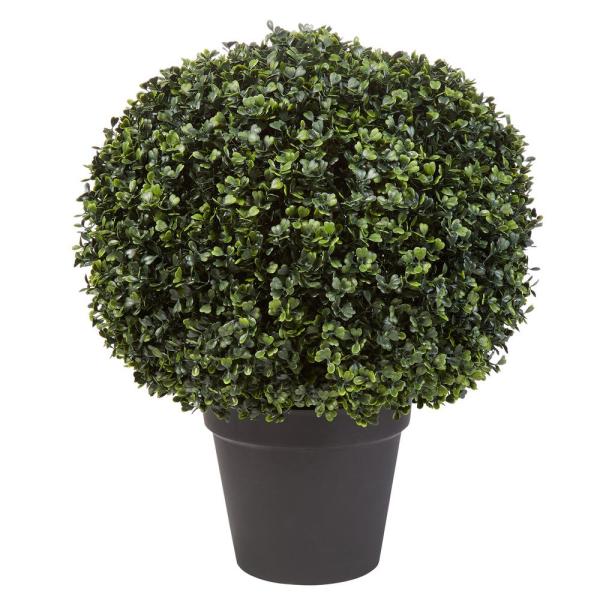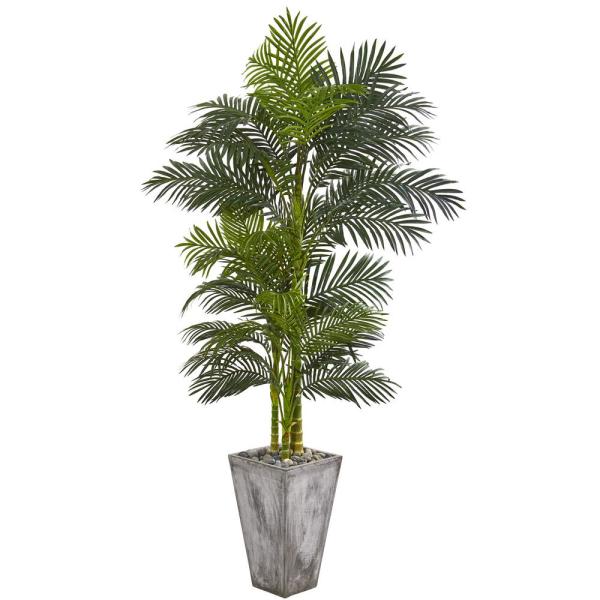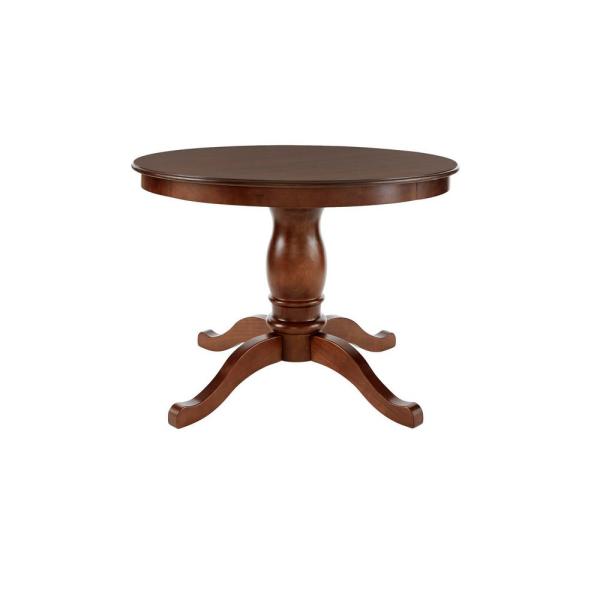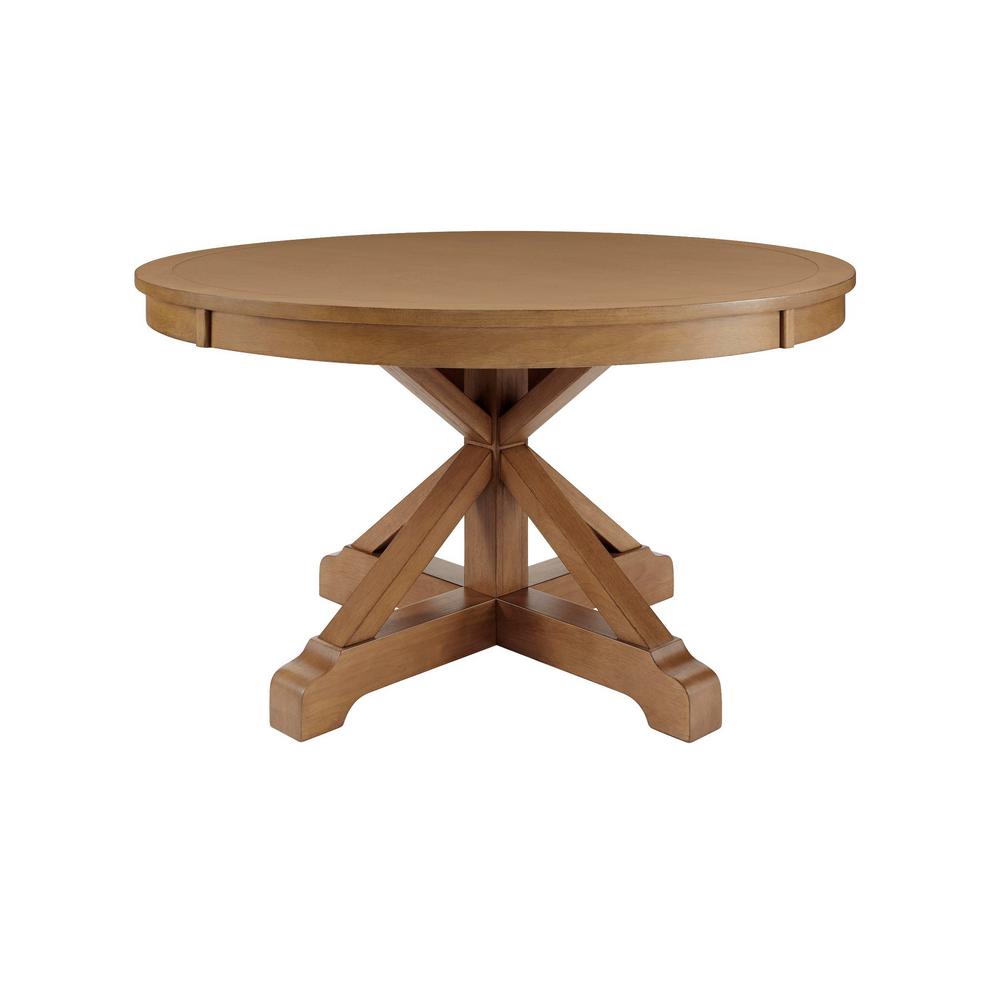In the realm of cosmetic red flags, “should I get bangs?” is up there with shouting “fire!” at full volume. It’s the stuff of memes and the makings of celebrity gossip. It translates to “I’m going through something” — or so The Internet says.
These past 12 months, however, when jeans have been rendered obsolete and zit stickers have become entirely viable accessories, it would seem we've demoted the urgency of crisis bangs. Rather, in quarantine, we’ve found new ways of expressing our feelings aesthetically: In lieu of the emotional haircut, many of us are opting for the emotional home makeover.
AdvertisementADVERTISEMENT
A home transformation is not just about aesthetics, though. It's an act of self-care: “I very much believe we should treat the maintenance of our homes as a central part of our wellness routines — up there with washing our faces and practicing yoga,” says holistic interior designer Gala Magriñá. “Our physical spaces are reflections of what’s going on inside of us. They can convey a great deal about what we’re going through at any given time.”
Where traditional interior design is typically defined as the meeting of beauty and function to cultivate a space, Magriñá sees holistic interior design as adding on the caveat that “beauty” is about more than just the physical world. It’s about energy, brain waves, and our own interior states. “When I walk through a space with a client, I often notice things in their homes that represent blockages in their lives: clutter, mismatch, messy and overused closets,” says Magriñá. “Tending to those things in our homes can release some of that blockage in our lives.”
Licensed therapist Dr. Kathryn Smerling, PHD LCSW seconds the notion: “As human beings we thrive on novelty. We need change for the sake of stimulation, we need to invigorate our senses. Repetition can be so numbing,” she says. And right now, when monotony is simply the operative term for our day-to-day, she sees interior pivots as not just beneficial, but somewhat crucial. “Updating our spaces, even in tiny, surface-level ways, helps us acknowledge that time is passing — that the world is continuing to move around us. That’s so important for our brains.”
AdvertisementADVERTISEMENT
Of course, right now, our homes are doing double duty — or quadruple. Whether or not you’re working remotely, your space has likely taken on a number of previously unnecessary functions. So finding ways to make it serviceable while also meeting your emotional and aesthetic needs can be a challenge. “We use the everyday spaces in our lives to cue different psychological, emotional, and relational states — even different parts of our identities” says Lily Bernheimer, director at environmental consulting firm Space Works. “When you go into the office, you feel like your ‘professional self,’ and the environment is generally austere and impersonal.” On the other hand, at home, you’re surrounded by objects that have sentimental or personal value — birthday cards, family photos, pottery projects — which can make “work mode” difficult to access.
So the question is, how do we actually go about reinventing our homes to reflect our current needs? How do we ensure that we’re prioritizing wellness and efficiency at the same time?
We spoke to interior designers, licensed therapists, and environmental psychologists to find out.
Address your clutter
Unless you’ve spent the last decade in witness protection, you’re likely familiar with the legacy of Marie Kondo. Her philosophy is an easy one to grasp: Hold tight to the items that “bring you joy” and set fire to everything else (or, less dramatically: donate, recycle, or otherwise dispose of said items).
There’s no question that she has a point when it comes to clutter — but her philosophy goes beyond eliminating mess. “[Clutter] takes up space physically, yes, but also spiritually and mentally,” Magriñá says. “It’s emotional baggage in literal form, so clearing cluttered spaces can allow for new things to come into your life as you dispose of the old.” It’s not as simple as shoving all your nonessential valuables into your hall closet, though: According to Magriñá, closets, in particular, represent our subconscious — they’re hidden spaces where we tuck things out of view. So, for those of us who tend to push defunct vacuums and binders filled with 10th grade geometry notes into our hall closets, the clearing of that space might be wise.
AdvertisementADVERTISEMENT
“Getting rid of clutter is one of those really simple ways of checking in with yourself,” adds Smerling. As she sees it, rinsing our spaces of unnecessary junk is an opportunity to take stock, both of our belongings, and our needs. The items that served us a year ago might no longer feel valuable. That’s a powerful acknowledgement — and a testament to the fact that time is, indeed, passing.
According to Sarah Hallock, co-founder and COO of holistic wellness firm The Well, the clearing of clutter can be motivating, too: “Our homes set the tone for everything else in our lives. So, a carefully curated, clutter-free environment allows us to stay calm and be more intentional with our time," she says. "It helps us accomplish what we want to get done each day. We have enough stressors in our lives, so our homes should be a respite for the senses — and the clearing of extraneous ‘stuff’ certainly helps in that realm.”
And on that note, Magriñá has one final tip for battling mess at home: "Clean your windows!" she says. "Filthy windows are something I see a lot in cities. But when you're indoors, they represent your connection to the outside world — and you want that view to be as clear as possible."
Introduce biophilic influences
While “biophilia” may sound like a rare, mosquito-borne disease, the term actually has much friendlier implications: It refers to our human inclination towards nature. On the one hand, it explains our yearning for fresh air, natural light, and greenery at large. On the other hand, it explains the mass appeal of plant life as a decor trend.
AdvertisementADVERTISEMENT
“Sure, spending time in nature is great, but for those of us working inside, something as small as gazing out the window at a tree or some grass has the capacity to decrease the circulation of stress hormones in our bodies, reduce our blood pressure, and enhance focus,” says Bernheimer. “Biophylic influence in the home helps with all of those things.”
Of course, the obvious solution here is house plants, and lots of them. But for those of us born sans green thumbs, it can come in more forms than one. “Any raw materials found in nature will help you concentrate and improve your mood,” says Bernheimer. “Everyone has a different biophilic flavor: It might mean various woods in natural tones, or fresh flowers, or natural light, or rich leathers.” Taking some true, living plants into your care is still recommended — but something as small as rolling up your carpet to reveal wood floors can also make a substantial difference.
Smerling, too, finds that bringing elements of nature indoors can be essential to our mental wellbeing: “Living things help balance the environment — both in our homes, and across the planet,” she says. “Plus, house plants require caretaking. They require nurturing. And right now those tasks can be very beneficial when it comes to getting out of our heads and back into the world.”
Embrace novelty
Introducing some novelty into our spaces is all but necessary — especially when life itself feels like it’s come to a halt. “There’s no growth without change. You can’t be static and grow as a human being, so if your environment has been totally unchanging it may be time to update it a little bit, to tweak it,” says Smerling. “Painting an accent wall, bringing in flowers, or changing the curtains are all little things that will stimulate your senses.”
AdvertisementADVERTISEMENT
We’re not talking about a billion dollar remodel. You need not undergo a complete overhaul to breathe some new life into your environs. But a little DIY modulation here and there can be meaningful. "Right now, we’re seeing more and more DIYers look to us to tackle at-home projects — not just for products themselves, but also for how-to content and advice," says Lisa DeStefano, VP of brand marketing and creative at The Home Depot. To meet consumer needs, the handy super store has even built out an app replete with shop-able goods, video tutorials, and image-product search capabilities — which, in DeStefano's words, can tell your smartphone "not only what that thing you need is, but where that thing is inside your local Home Depot store."
It's not that we all wouldn't relish the capacity to hire a team of contractors to revise our current home set-ups — but on the contrary, there are some notable benefits to making said updates, yourself. Whether or not you identify as handy, the very task of reshaping or otherwise altering your home of your own volition can be a powerful one. Just ask Danielle Guerrero, who found herself leaning into do-it-yourself home tasks when she lost her sister as a means of coping — a venture which later cemented her status as a bonafide DIY influencer. "[DIY] made me feel in control. I felt strong," she says. "It brought me the joy and creative release that I was missing after I lost my sister and I don't think I would be where I am today without it. I love that I can make something out of nothing and look at it and say, 'I DID THAT!'”
AdvertisementADVERTISEMENT
The ways in which home novelty catalyzes creativity are not just limited to the crafting/DIY space, though. Minor shifts here and there can be stimulative to our left brains, too — especially for those of us experiencing what the quarantine overlords have dubbed Creative Block. “Finding inspiration when you’re stuck mostly in one, boring spot is hard, but not impossible,” says environmental psychologist, B Sanborn. “At a time like this, if you’re struggling creatively, I’d recommend that you bring things into your home that naturally change on their own: plants, reflective or refractive things like mirrors and crystals, even things like a pet fish or sourdough starter.”
Modulate your space throughout the day
In an ideal world, we’d all have homes with distinct spaces for work and play — but even with that out of the question, there are ways to promote productivity without tainting your interiors with Email Anxiety.
“Our apartments were simply not designed for a 40 hour work week — spatially, ergonomically, or in terms of lighting and acoustics,” says Sanborn. “But assuming that most of us can’t build or knock down walls right now, we can still create some boundaries between work, hobbies, relaxation, and personal relationships.”
As Sanborn explains it, humans are naturally visual creatures, so visual boundaries are a healthy place to start: Try setting up a standing screen between your work station and the remainder of your apartment, tucking away your work materials (laptop included) somewhere specific during non-work hours, or even draping a curtain over your computer when the work day is over. The idiom “out of sight, out of mind” has some real psychological grounding — so find ways to keep work materials “out of sight” whenever possible.
AdvertisementADVERTISEMENT
“The reverse is also true,” Sanborn adds. “If you want to spend more time on your hobbies outside of work hours, leave a small corner space set up with the things you need on display in an attractive way. The more time and effort it takes you to engage in an activity, the less likely you are to do it — even something you really want to be doing. That goes double and triple for when you’re tired, bummed out, stressed, or overwhelmed.”
No matter where in your home you’ve set up shop, Bernheimer notes that a sense of modulation is essential. “Let’s say you work at your kitchen table,” she says. “You have to ask yourself, ‘what can I do to be intentional about transforming this space into an office at the beginning of the day, then back into a kitchen at the end of the workday?’” While it’s become commonplace to do something active like stroll around the block just to add formalized structure to our schedules, we can also make changes in our apartments to the same effect. “Eat breakfast at the kitchen table,” advises Berheimer. “Then, after you eat, take off the tablecloth, move the flowers, introduce more blue-toned, high-wattage lighting, pull out your laptop. And at the end of the day, put that tablecloth back — do little things to be intentional about resetting that space.”
On that note, she also believes we should be modulating our lighting throughout the day. Where, in the natural world, the sun moves across the sky as hours pass, changing its direction and intensity, it can be helpful for our circadian rhythms to fluctuate our synthetic lighting as well. “Brighter light at a higher intensity can be good for us earlier in the day. It helps promote some of the anxiety we need to get work done. But using lower quality, warmer light in the evenings helps calm us down while also signaling to our brains that time is passing.”
AdvertisementADVERTISEMENT
CEO of furniture collective ZZ Driggs, Whitney Frances Falk, takes a more mobile approach: “What I do is keep a little ‘WFH tray’ that travels with me from nook to nook, space to space,” she says. “It holds my important charging cables, my water bottle, a candle, my journal, my laptop, and a couple of pens. Then, I change spaces whenever I feel restless. In that way, no particular space in my home becomes ‘the office’ — which helps me continue to enjoy my space even in non-work hours.”
Be intentional with your curation
“When hanging art, people will often say ‘I just hung that because my mother-in-law gave it to me as a gift’ or ‘the wall was blank so i just ordered this print online’” says Magriñá. But the danger there, for her, is a lack of alignment. Our personal, aesthetic sensibilities don’t click with art or decor that’s there just to, well, be there. Intentionality is key.
On the flip-side, with an eternally evolving roster of home goods on display across our TikTok feeds, it should come as no surprise that we’re at the whim of trends. Like with all passing satrorial phenomenon it’s easy to fall prey to of-the-moment decor: Checkerboards! White-washed minimalism! Internet-acquired prints of naked ladies with plants! But purchasing the it thing just because it’s the it thing does not exactly reflect deep-cut intentionality.
“I always ask myself two central questions when I’m decorating,” says Falk. “Am I following a trend — will this look ‘so early 2020s’ in ten years? And: Is this material of poor quality?” For her, this is a way to save money, buy more sustainably, and assess how much she actually likes a piece she’s considering purchasing.
AdvertisementADVERTISEMENT
Without even addressing decor fads, though, identifying your taste to begin with is no small feat. And whether or not you’ve nailed down your aesthetic sensibility, styling your home accordingly is an intimidating task, too. Fortunately, Magriñá has some advice: “What I tell clients is, start with just one room. Don't get overwhelmed with the whole place. Take on that one room and say, what do I not like in here? What doesn’t feel ‘me’? Then junk it, donate it, pass it on, get rid of it.” Once you’ve cleared your space, then the process of refilling it begins. “A lot of clients get stuck here because they don’t know what their style is, or how to find a piece that matches their vision,” she continues. “So I tell them to go onto Pinterest, make a board of their favorite things — furniture, art, decor — then pull out four or five things on that board that look like they’re going to the same party.” Look at the filters on the items you’ve selected. What do they have in common? How are they tagged? Can you apply that verbiage to a broader internet search?
Consider your cohabitants
Once you’ve fully embarked on your journey towards aesthetic intentionality, Sandborn adds that you should also acknowledge the folks who share your home. “Our spaces both shape our interactions with others and are shaped by those interactions,” they explain. “Everyone should feel reflected in their space.”
If you’re not living solo, there are a few easy ways to lean into furniture designed to enhance socialization: Round eating tables create more intimacy; shared living spaces where furniture angles inward, rather than towards a TV promote togetherness; and workspaces that face one another help cultivate soothing professional environments (Sanborn notes sitting shoulder to shoulder can catalyze competitive feelings). But whether you’re living with a best friend, partner, or a Craigslist roommate, Sanborn says the most important thing is collaboration: A shared space should feel as such, even if that means compromising on a few pieces. And collaborating to outfit a space is a healthy way of assuring equality amongst its dwellers. “I’m going to put in a big vote for shared household work, not only for equity in relationships but also, in service of real investment in our spaces. Think about it: if you never clean, maintain, repair, replace something, do you truly own it?” Sanborn says.
AdvertisementADVERTISEMENT
Whether or not you’re in a position to go full-throttle HGTV home makeover, spend some time with your friend/partner/other at your local home goods depot. Talk about wood varnishes (sexy, we know). Get some IRL help with large-scale projects and custom builds. Or go a little rogue, and splatter-paint your walls Princess Diaries-style. Just be sure you’re making that investment together.
shop 8 products
AdvertisementADVERTISEMENT









